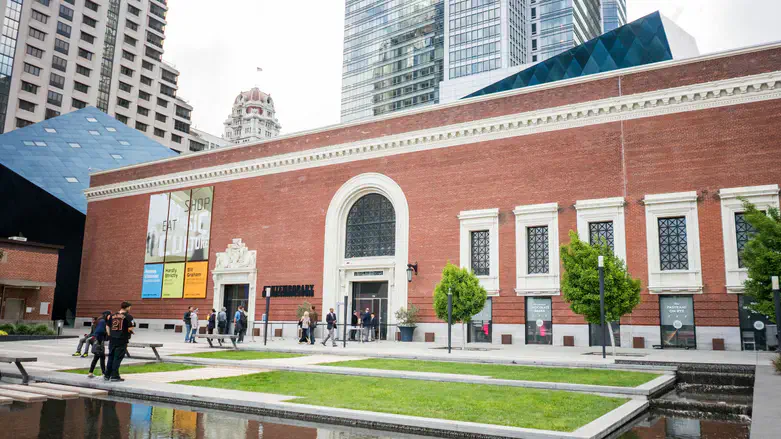
Following a prolonged drop in visitation and donations from the public stemming from the Covid pandemic, the Contemporary Jewish Museum in San Francisco announced Wednesday it’s taking a “sabbatical.”
That’s the word the museum is using to describe the closure of its galleries to visitors starting Dec. 15 for at least a year as the cultural institution focuses on revamping its financial strategy and programming.
“In Judaism, Shabbat — or the Sabbath — is a time of rest, an essential moment carved out of the week for restoration and renewal,” the museum said in a press release announcing the decision. “Throughout Jewish culture, there are myriad references to moments of pause as a means to rejuvenation.”
Visitation is down by half compared to typical pre-pandemic levels, and the museum has been running multimillion deficits for at least two years, according to the most recent financial disclosures available.
The economic headwinds the museum faces are common among cultural institutions across the United States and are compounded by struggles particular to downtown San Francisco, where vacant storefronts have proliferated amid a drop in the city’s population and a demoralized atmosphere for civic life.
The decision means that two-thirds of the museum’s 30 employees will be laid off between now and March.
“It is far better for us to take necessary steps towards restructuring now, rather than waiting until we no longer have options,” CJM’s executive director, Kerry King, said in a statement. “This decision does not come without significant pain because it will affect our team of extraordinary and deeply dedicated individuals who work tirelessly to fulfill the museum’s mission.”
Founded in 1984, the museum relocated in 2008 to its current home, an architectural landmark in downtown San Francisco designed by celebrated Jewish architect Daniel Libeskind. Holding no permanent collection of its own, CJM’s mission has been to explore Jewish themes through exhibits and education focused on a changing array of contemporary art.
The museum has in recent years featured exhibits celebrating feminist artist Judy Chicago and singer-songwriter Leonard Cohen. For a 2022 exhibit, various artists were invited to contribute pieces that relate to the Jewish concept of tikkun, meaning repair, which was used to refer to “a phenomenon of care and interconnectedness that is grounded in personal action, environmental responsibility, and community, unfixed from its evolving meanings throughout history.”
Widespread political and cultural tensions triggered by reactions to the Israel-Hamas war have not spared the museum. In April, ahead of the opening of the museum’s California Jewish Open exhibit, seven of 54 participating artists, self-identified anti-Zionists, withdrew their work in protest of Israel. The artists had demanded the museum join the boycott against Israel by cutting any investments or funding tied to the country.
Admission to the museum is free through Dec. 15 when doors close.
The closure comes as another of the country’s largest Jewish museums, the Weitzman National Museum of American Jewish History in Philadelphia, pursues legislation to become part of the Smithsonian network as a strategy to reach financial sustainability.